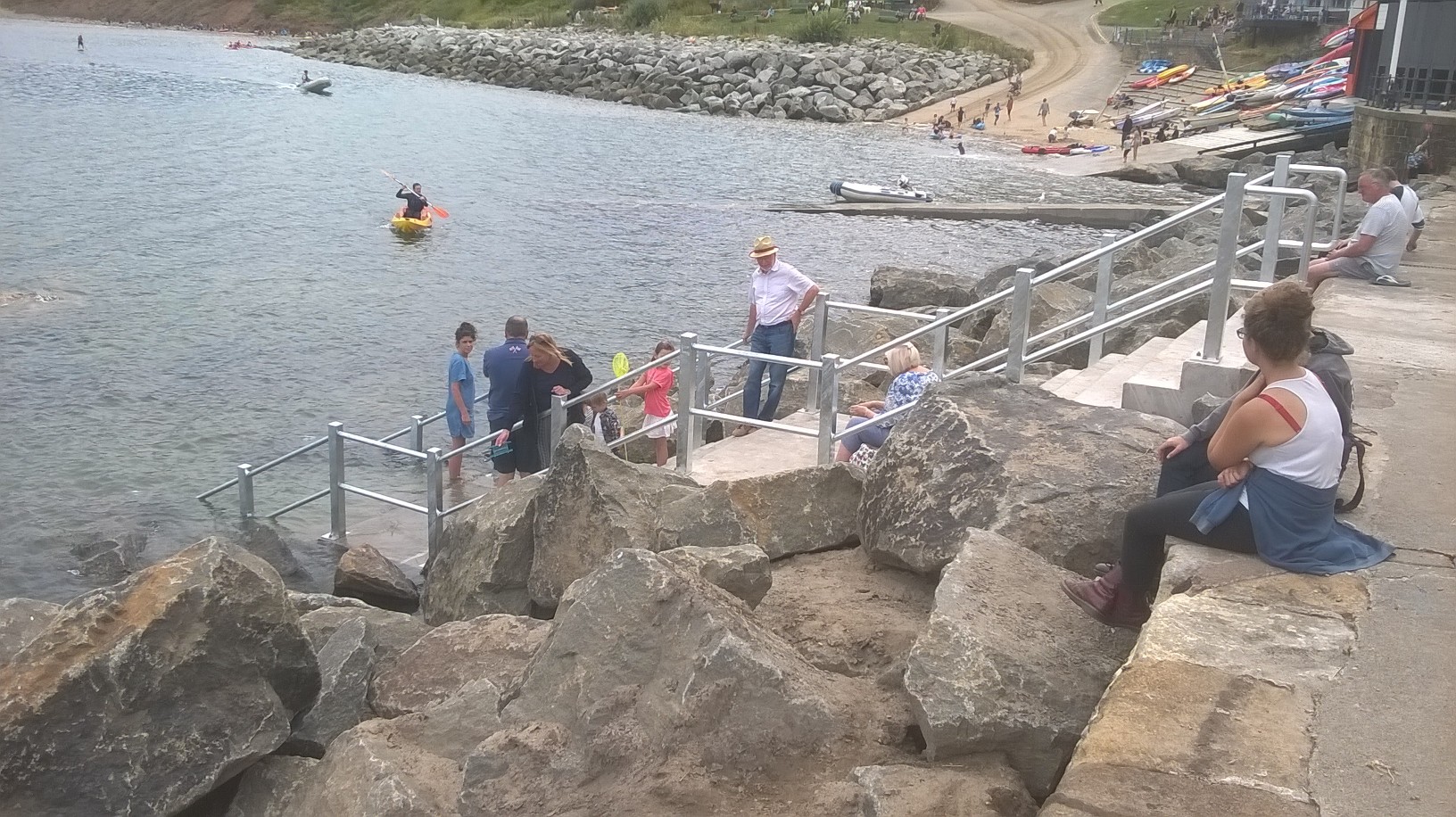Runswick Bay Coastal Protection Scheme Ecological Enhancements
Scarborough Borough Council is the Coastal Protection Authority on the North Yorkshire coast. Colleagues from the Projects Unit at Scarborough District Council described some of their recent work in Runswick Bay.
What climate impacts did the project aim to address?
The scheme improves the climate resilience of the village, including from the sea level rise and increased storminess which are predicted as a result of climate change.
Why was the project needed?
Runswick Bay is a picturesque village situated North of Whitby on the North Yorkshire coastline. The coastline at Runswick Bay and its surrounding area consists of unstable cliffs made up of soft Jurassic bed rock and weak glacial sediments, which are susceptible to landslides. The historic concrete seawall reached the end of its serviceable life with a predicted failure/loss within 10 years. Loss of the structure would have serious implications for the stability of the slope behind.
What work was done?
The Runswick Bay Coastal Defence Scheme consisted of seawall repairs and the placement of c.9,500 tonnes of Norwegian high density granite armour-stone in front of the existing concrete seawall to create a rock revetment defence. The newly constructed scheme offers 100 years of better protection to 96 residential and 17 non-residential properties that were predicted to be lost should the seawall fail.
What partnerships and collaborations have been needed?
The scheme area has a number of important environmental designations and accreditations such as the Runswick Bay SSSI, North Yorkshire Moors Special Protection Area, The Runswick Bay Marine Conservation Zone (MCZ) and Heritage Coast. The project design required assents and consents from Natural England, North York National Park Authority, Environment Agency and the Marine Management Organisation. Given the formal MCZ designation of the intertidal rock platform during the scheme design phase it became vital to maintain the favourable condition of the intertidal area to gain consent and planning permission.
The Runswick Bay Coastal Protection Scheme is a partnership project made possible with Environment Agency Grant in Aid, a community contribution through the Runswick Bay Coastal Protection Trust and an in-kind contribution by Yorkshire Water through enabling works that allowed the scheme to be constructed.
Why did you build new rock pools?
As a direct result of key environmental designations, the design engineers worked in close collaboration with ecologists from the University of Hull to develop innovative rock pools designs within the granite boulders to act as a form of compensatory habitat and to increase species diversity and abundance in the area. Rock pool diameter ranged between 36 cm and 56 cm and water depth ranged from 5 cm to 19 cm.
The University of Bournemouth has been commissioned to monitor the site’s habitats evolution over the next 3 years. The monitoring to date has shown that the rock pools have increased the species richness, species diversity and total abundance of the granite boulders compared to an un-manipulated control area.
How does your work help to make the community resilient to climate change impacts?
The rock pools further serve to mitigate against the impacts of ‘coastal squeeze’, where the landward transgression of intertidal habitat in response to sea level rise is prevented by a coastal structure.






